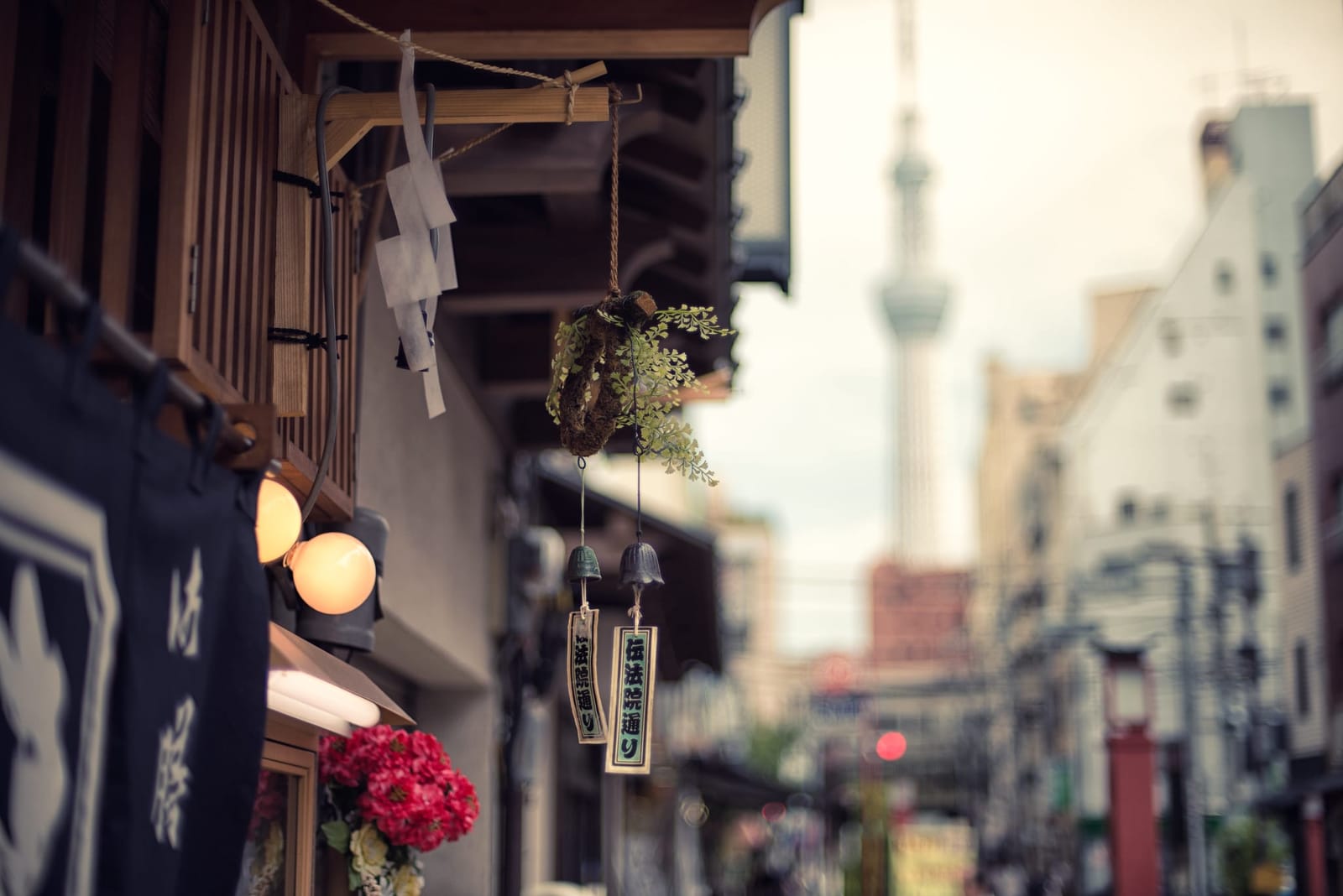Originally published on November 3rd, 2012 as part of a series on World Wonders.
There is a new tower in town.
In Sumida Tokyo stands the world’s tallest broadcasting tower, the Tokyo Skytree. The Skytree is 634m/2,080 ft high. It is the second tallest structure in the world behind the Burj Khalifa (829.84m/2,723 ft) in Dubai.
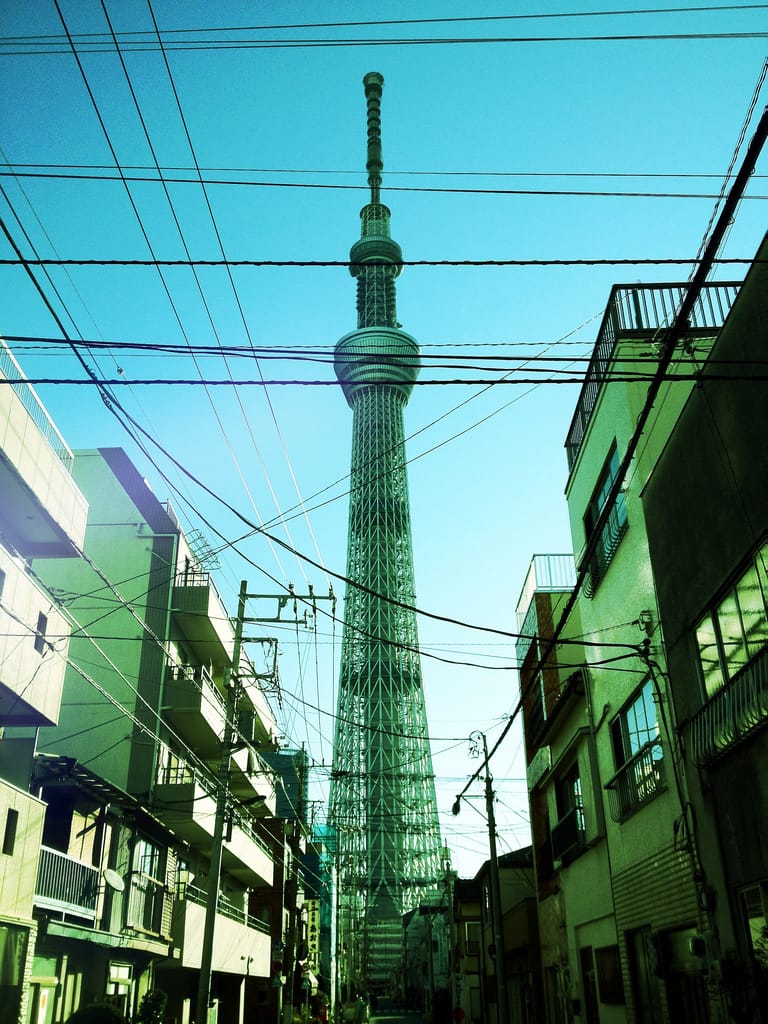
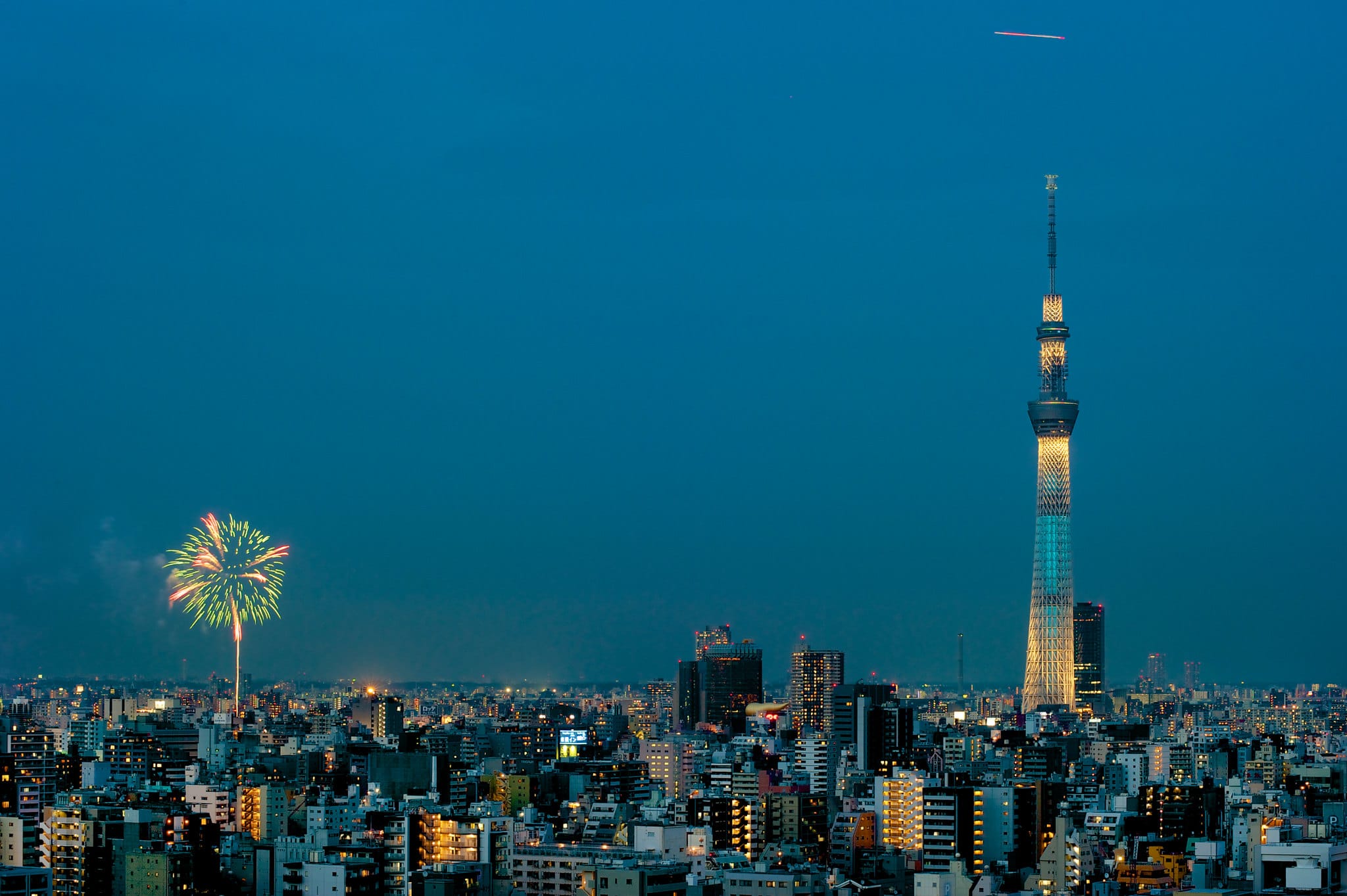
The Tokyo Skytree ticks all the boxes as far as world wonders go. It’s ginormous, majestic, and expansive. You can feed off its glory and basque in its shadow. I can see it towering above Sumida Tokyo from my apartment if I stand all the way to the left in the sunroom.
But I am much more interested in what is going on in the shadows near the tower.
This is shitamachi or ‘low city’ – downtown, if you will. Shitamachi implies more than a literal geography. It means the place is more down to earth, gritty, friendly. It usually has cheaper rent, soul food, and other sundries. Community is close and highly valued. In Sumida many people still leave their doors unlocked. It is also the home and workplace of many artists because of the cheap rent.
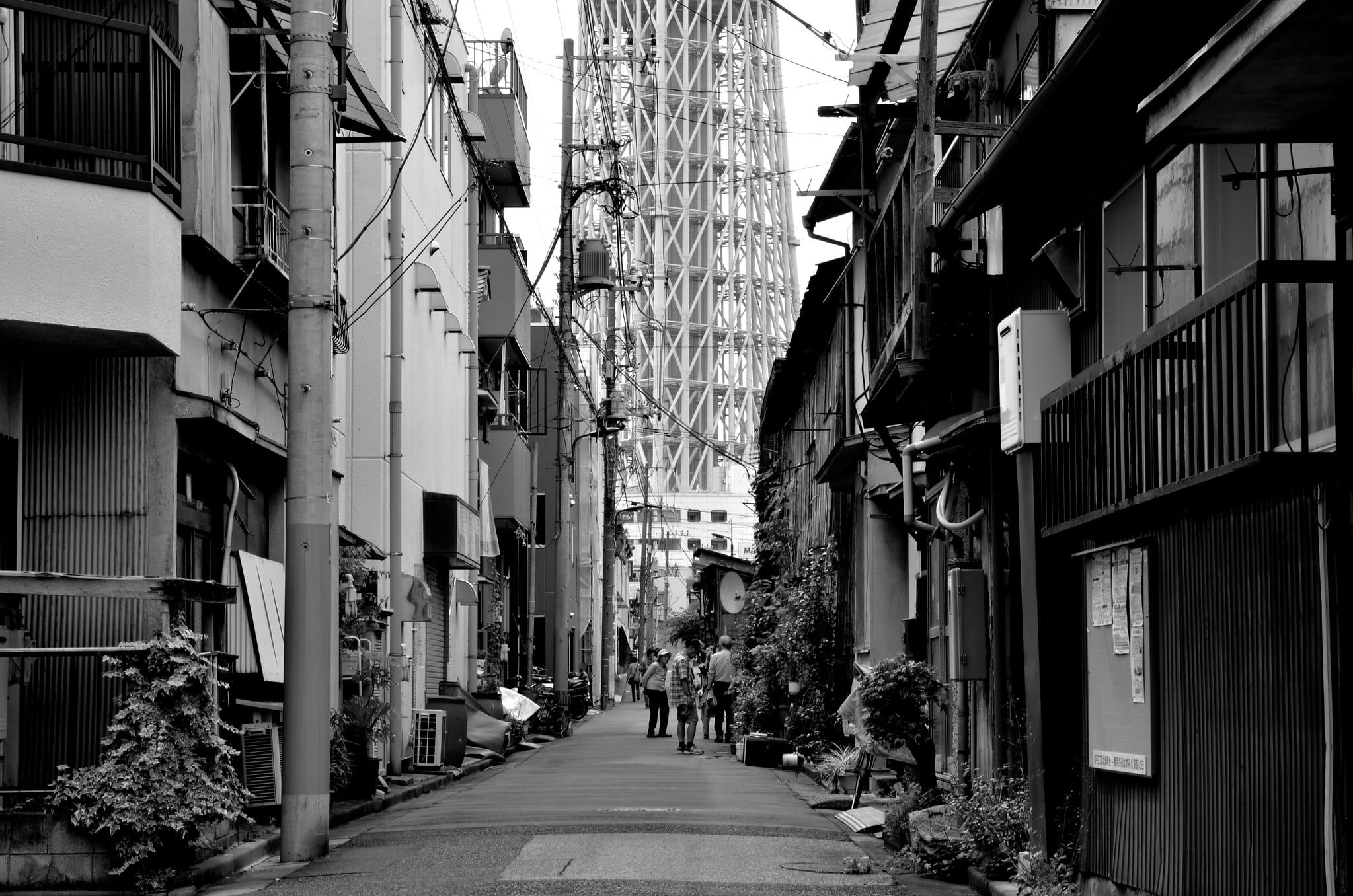
One group of artists is collaborating on a project involving storytelling.
Kamishibai is an old Buddhist storytelling art used in temples by monks using paper scrolls. It was revived in the 1920s through the 1950s as a way to earn a meager living riding bicycles from place to place with a small box stage attached to the back. Now there are only a few kamishibai artists left. One is in Sumida.

Learning an ancient storytelling art
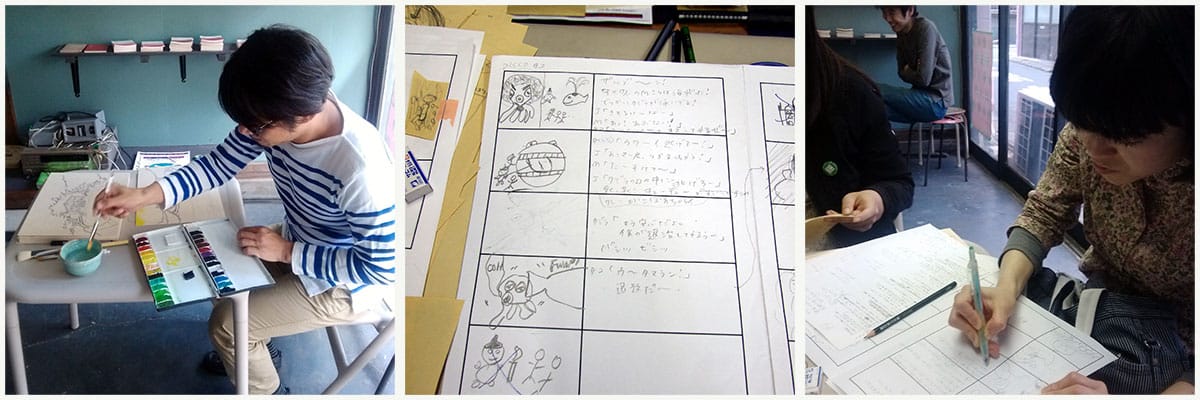
Kamishibai storyboard
A friend of mine, Takeyo Kimura, is a community artist who often presents art projects involving the stories of average people in different neighborhoods and areas throughout Japan. He uses creative ways of presenting these stories such as sound installation, or writing small books with a map so participants can actually visit the places where these stories happened. He is now collaborating with a kamishibai artist combining kamishibai with the stories of the residents from the shitamachi area of Sumida.
I am participating in his five week workshop with a team or artists creating our own kamishibai stories from the stories of the local residents. An old woman who runs a cleaning shop stops by to listen to our stories and sits on her own chair in front of the small workshop space. A public TV crew stops by to interview us and do a story on the workshop. Random friends stop by to drop off food or show support. Tour groups on their way to the Skytree look on with interest.
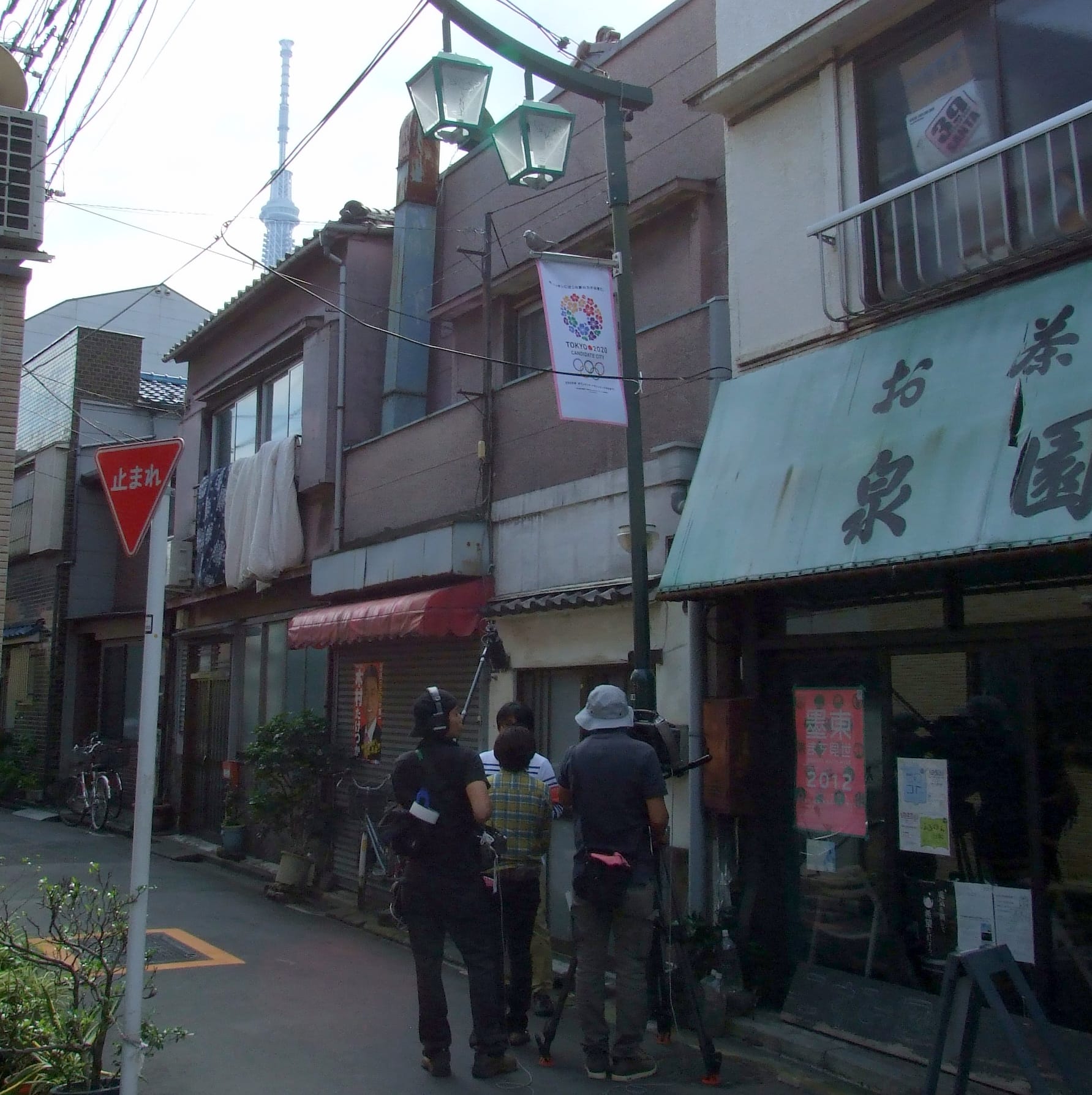
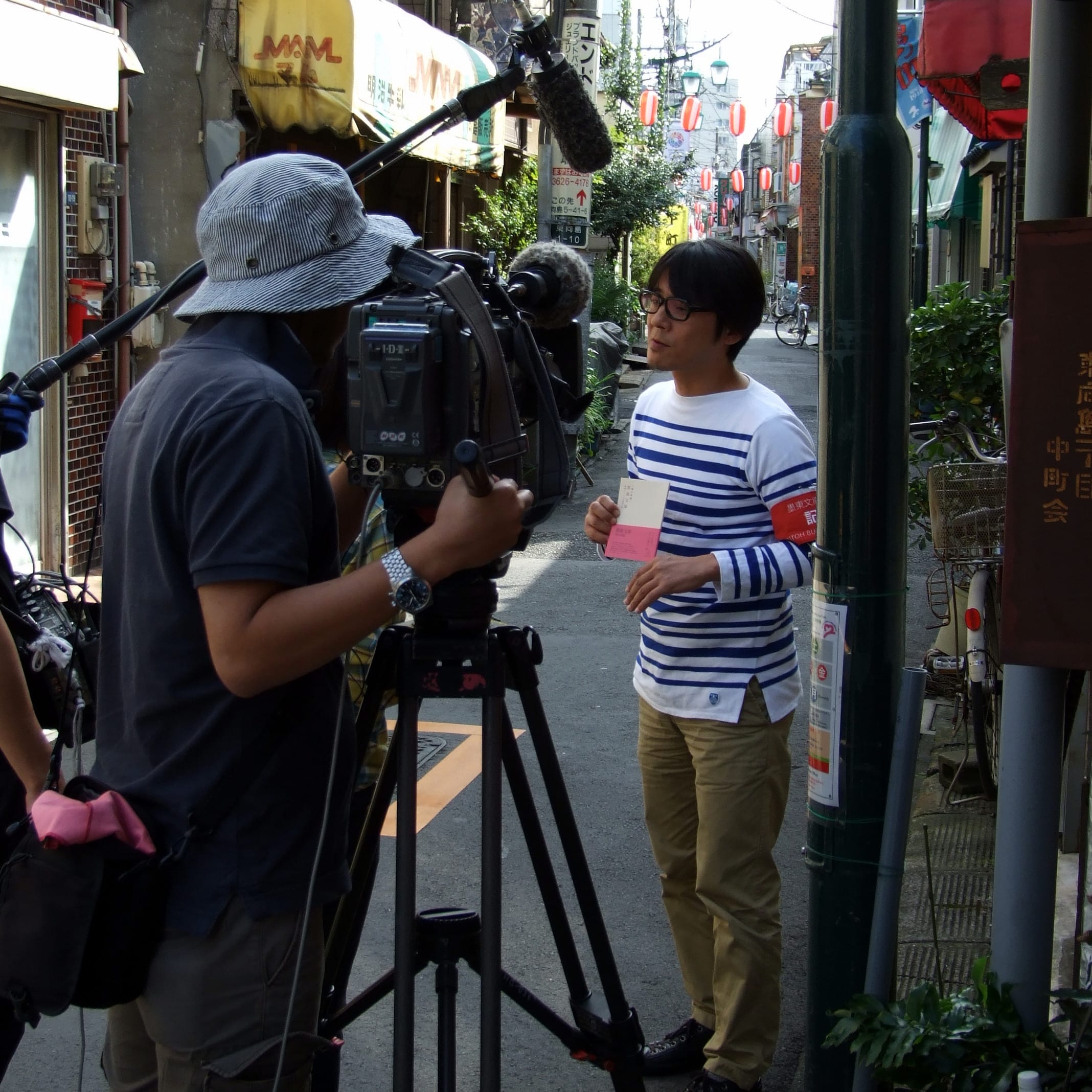
My Japanese is poor so I struggle to communicate my ideas about how the narrative of the short story should go. Ours involves a man’s story of how the houses in the neighborhood are so close the kids would just jump through second story windows to visit friends. We imagine a whole world where kids do not even need shoes because there are amazing places to visit from the second floor like foreign countries, sumo stables, and even the ocean.
While we were spinning these tales I realized we were continuing the fabric of community through storytelling. It is a multi-layered fabric.
We needed older faces and a place where things happened, new faces and space where things are still happening. We needed the effort of people to actually do something and not just talk about it in a virtual community.
This is wonderful to me. A place where meaningful community is happening despite the meaningless busyness that goes on around us and in us.
This is a world wonder.
Top photo by Carlos Donderis. Uncredited photos by the author.

